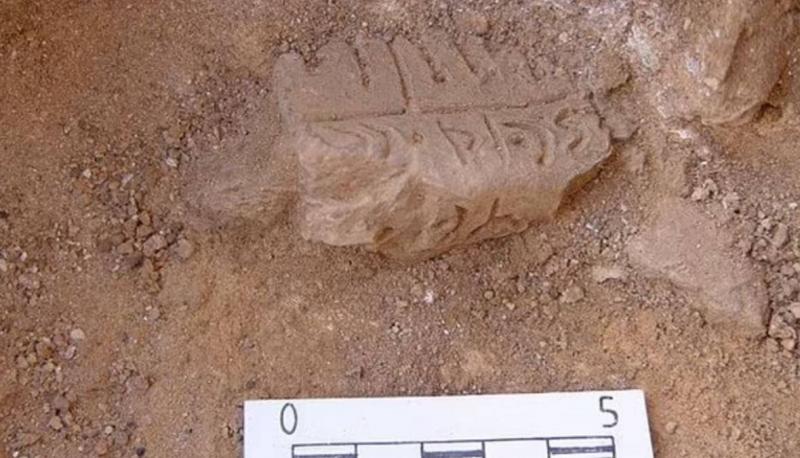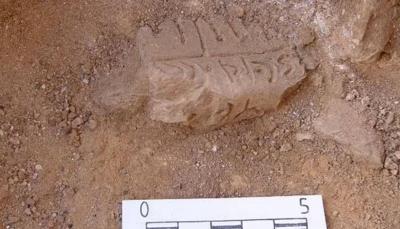The Canaanites are one of the oldest Semitic peoples who settled in the ancient Near East, specifically in the Levant, southern Lebanon, and Palestine. Their origins date back to the third millennium BC, during which they established prosperous cities and kingdoms along the coasts and fertile plains. The Canaanites were renowned for their skills in agriculture, trade, and construction, leaving a lasting imprint on subsequent cultures. Most importantly, they were pioneers in developing the Canaanite alphabet, which contributed to the evolution of writing. Thanks to new analyses, archaeologists have discovered that it is likely the Canaanites who developed it and have finally traced a missing alphabet that has puzzled scholars for decades, dating back to this civilization 3,000 years ago. The Canaanites lived throughout southern Canaan, Gaza, the West Bank, Jordan, Lebanon, and parts of Syria until the Israelites waged a series of wars against the Canaanites and eventually seized most of their lands, an event that occurred in the second half of the 13th century BC. According to a Daily Mail report, the enigmatic clay tablets found date back to that time. A study published in the Journal of the American Society of Overseas Research found that the text was written from left to right, featuring 29 unique symbols of dots, vertical bars, and other abstract designs. The tablets also displayed some unique sets of marks, including two that resembled an eye, and scientists identified this mark as the letter "Ayin," which is also the Hebrew word for "eye." These similarities and patterns have helped scholars analyze the meaning of the tablet symbols and begin to decode their mysterious message. The tablets also seemingly contained "short ritual sayings" and "poetic proverbs," indicating that they were likely used in the religious rituals held at the Deir Alla temple.
Secrets of the Biblical Cities
Archaeologists had uncovered the secrets of a city from the biblical narratives that was located within the "Promised Land," where the Israelites settled after Moses led them out of Egypt. They unearthed stone walls, pottery, and other artifacts dating back over 3,200 years. The Bible mentions that the Israelites entered the Promised Land, also known as Canaan, around 1406 to 1407 BC after wandering for 40 years in the desert. The team also discovered a handle from a broken jar bearing the name of a king mentioned in the Bible, providing further evidence for the biblical account of Moses. The Daily Mail report noted that the discoveries included preserved pottery, one of which had a seal on the handle inscribed with "from the king," honoring King Hezekiah’s reign in Judah around 701 BC. Fragments of pottery from preserved earthenware were scattered around, approximately 20% of which dated to the time the Israelites reportedly arrived after 40 years of wandering in the wilderness, while the remainder was made over the following 900 years.
Earlier this year, archaeologists found five archaeological evidences indicating that stories and details mentioned in the Bible are accurate: according to Dr. Eilat Mazar from the Hebrew University of Jerusalem, a clay seal discovered in Jerusalem in 2019 dating back to the 8th century BC may bear the signature of the prophet Isaiah, who prophesied the coming of Christ.
The Ancient Jerusalem Earthquake
The books of Amos and Zechariah in the Old Testament describe an earthquake that shook the city of Jerusalem about 2,800 years ago, with archaeologists finding evidence of the biblical event in 2021.
The Eclipse That Made "The Sun Stand Still"
When Joshua, the leader of the Israelite tribes after Moses, led his people to victory, he witnessed that "the sun stood still and the moon stopped" in the sky. Researchers believe that "the stillness of the sun" was a real event, a solar eclipse that occurred three thousand years ago, with its exact date pinpointed to October 30, 1207 BC. Scholars indicated that an Egyptian text, the Merneptah Stele, provides definitive evidence that the Israelites were in Canaan between 1500 and 1050 BC.
The Siege of Jerusalem
In 2019, researchers uncovered a unique mix of artifacts that indicated that the city experienced a fiery siege, finding bronze and iron arrowheads of the Scythian type, pottery, lamps, and burnt wood and ash, which they believe is evidence of Babylon’s conquest of Jerusalem in 587/586 BC.
King Solomon’s Mines
In 2017, archaeologists from Tel Aviv University uncovered organic materials over 3,000 years old in the Timna Valley in the Arava Desert of Israel. Scientific work and materials found in the region indicate that the mines were operated by the Edomites, who managed mines dating back to the era of King Solomon.




